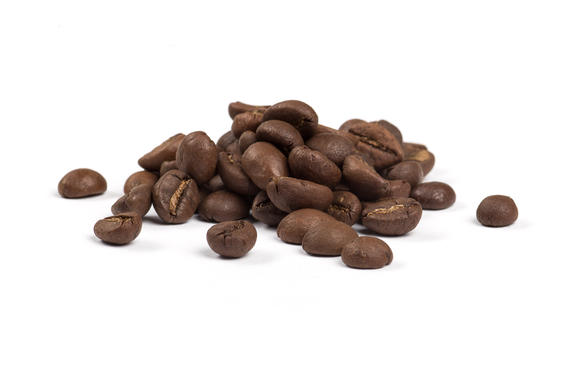cinibeans
INDIA ROBUSTA PARCHMENT AB ORGANIC - COFFEE BEANS
INDIA ROBUSTA PARCHMENT AB ORGANIC - COFFEE BEANS
Couldn't load pickup availability
Place of origin:
India
Species:
Robusta
Countryside:
Wayanaad
Sea level f. m.:
600 - 900m
Taste:
Chocolate
Processing:
Wet
BIO:
Yes
Composition
Robusta BIO 100%
CREAM AND COFFEE FLAVOUR
India Robusta Parchment AB BIO coffee has a wonderful chocolate taste and a very rich crema. This coffee is in great demand worldwide, with many popular coffee producers using Indian Robusta in their blends for home use as well as in restaurants and cafes.
The origins of coffee
Wayanad is a district in the northeastern Indian state of Kerala. It boasts numerous water sources, high mountains and many tourist attractions. The local wildlife is varied, with forests around Karnataka and Tamil Nadu home to wild animals such as elephants and bears. Agriculture is the backbone of the local economy and much of the land is used for this purpose. Coffee and tea trees are the main crops grown, with cocoa, pepper, vanilla, rice, coconuts, cardamom and ginger accounting for a significant proportion of production. Cattle rearing is another source of income, and, typical of Indian coffee plantations, they are surrounded by fruit trees and spice gardens. The aroma of these is reflected in the taste and smell of the coffee. The organic character of this robusta coffee is worth mentioning. No industrial fertilisers, pesticides or other compounds that could leave harmful residues in the final product are used in the growing and harvesting process. The coffee is processed using the so-called wet method, i.e. washing. Water is used to separate the husk from the pulp, which usually contains two beans. The farmers first put the coffee beans in pots filled with water and then pressed them through crushing plates. The coffee is then poured into fermenting vats where it ferments, completely dissolving the residual pulp surrounding the beans. Finally, the green coffee is dried, either in a drier or in direct sunlight.
Coffee cultivation has a very long history in India. It appears to have been first planted in 1670, with the first real plantation being established around 1840. Initially, local farmers grew mainly arabica, but the coffee rust epidemic, which affected the vast majority of the bushes, led to a switch to the more resistant robusta. In 1942, the Coffee Board of India, an organisation run by the Ministry of Commerce and Industry, took over the supervision of the plantations and the control of the quality of the coffee exported. Today, about 250 000 farmers are engaged in coffee cultivation, 98 percent of them smallholders. Indian coffee accounts for about 4.5 percent of the world market, most of which is exported to Germany, Russia, Spain, Italy and Belgium.
Taste and aroma
More gently roasted coffee offers a richer and more complex flavour profile. It better preserves the original nuances of the coffee-growing area, including fruity, floral or nutty notes.
Health benefits
In particular, quality coffee roasted to an ideal profile may contain higher levels of antioxidants such as chlorogenic acid and other phenolic compounds. These substances have anti-inflammatory and antioxidant effects. Unroasted premium coffee is also gentler on the stomach, as it contains fewer acids that can cause irritation.
Environmentally friendly
Plantation coffee is often grown with a greater respect for nature, with an emphasis on responsible farming and fair trade, which can have a positive impact on cultivation and communities.
Effects - coffees
Effects - robusta
Effects -
.bylina-img-cont { max-width: 200px }
.bylina-img-cont img { max-width: 100%; height: auto }
$(function() {
var modal = $('#bylinaModal');
modal.on('show.bs.modal', function(e) {
$.get('/~zbozi-bylinacontent', {
bylina: $(e.target).attr('data-transfer')
}, function(payload) {
modal.find('.modal-title').html(payload.title);
modal.find('.modal-body').html(payload.body);
}, 'json');
});
});
Presentation of coffee packaging
The coffee is packaged in high quality aluminium packaging without any special graphics, as our company focuses on taste and quality. You can also check the actual freshness of the coffee thanks to the valve that releases the gases produced after roasting. Quality packaging that preserves the character of the coffee. Coffee is always hermetically packaged to resist moisture, light and external odours.
Presentation of coffee packaging
Instructions for use
Grind the coffee according to its type.For one cup of coffee, use at least 1.5-2 teaspoons (about 7 g) of ground coffee.Pour the coffee into water at about 95°C.

